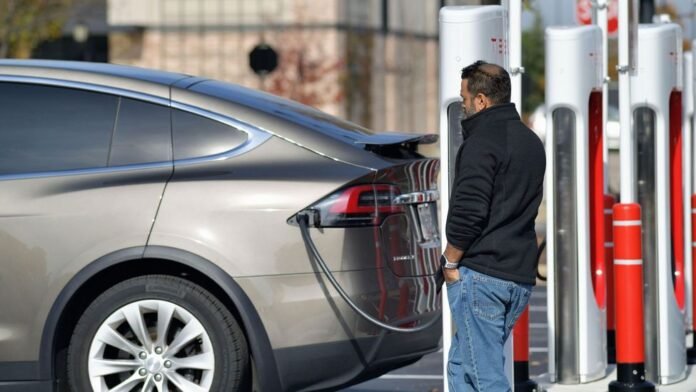Analysts have been predicting for the past few years that Americans will embrace electric vehicles with great enthusiasm and speed as the way of the future for transportation. Although the market for EVs is growing, it seems that the US’s “revolution” in electric vehicles is moving much more slowly than some analysts and automakers had predicted.
In the US, EV sales have increased since 2016; in 2017, there were around 65,000 EVs sold, and by 2022, there were over 800,000 EVs. Following the growing trend, EV sales increased 51% in the first half of 2023, according to data from auto analytics company Motor Intelligence. Still, those gains represent a decline from the 71% growth in the same period previous year. In addition, Tesla, the market leader with over half of all EV sales, recently revealed its lowest quarterly profitability in the previous two years, which caused a $138 billion (£111.4 billion) decline in the value of the company’s shares.
In this regard three reasons are to be discuss below.
Affordability
The primary barrier among these is the cost of living. EVs continue to be significantly more expensive than their combustion counterparts, despite declining costs and the US introducing tax benefits. The cost is too high for the typical American automobile buyer, as loan rates are at a two-decade high. Government initiatives aim to lower costs by providing EV buyers with incentives. A $7,500 (£6,060) federal subsidy is available to help with the purchase price, and a number of states also provide an additional credit ranging from $1,000 to $7,500 (£813 to £6,060). According to Krear, these additional incentives appear to be a deciding factor in whether or not customers will make the purchase: “Of the top 10 adoption states, five of them have state incentives.”
While gas-powered vehicles require regular maintenance and gas, the cost of an electric vehicle doesn’t stop at the dealership. EV registration costs are higher in some states. Some have more expensive repairs and demand that their owners pay recurring membership fees for services. Furthermore, fueling an EV with one’s own source of power isn’t always less expensive due to the variable cost of electricity.
Challenge of Charging
For many common Americans, powering EVs is hampered by a problem that goes beyond the cost of installing a home charger: there is nowhere to store those chargers. “It might make sense to buy an EV if you could recharge that vehicle in the driveway of your house while you’re asleep,” according to him. “The problem is that many Americans don’t even have driveways.” According to Krear of J.D. Power, “one in three shoppers don’t have access to home charging”.
It’s still much easier to refuel your vehicle with petrol than with electrons at this stage, even taking into account the travel to a fossil fuel station. It will take you at most six or seven minutes to fill up your car with petrol if you pull up to a station with an empty tank. You will need hours to fully charge an electric vehicle (EV) to its maximum capacity. And ordinary Americans just don’t have that type of time.”
These problems cause the public to lose faith in lawmakers and manufacturers’ ability to build a fully functional infrastructure in the near future, which can eventually erode consumers’ confidence that an EV is the right solution for them. This is because the number of EVs on the road is outpacing the installation of chargers.
An Addition, not a Substitute
People for whom an EV was a simple sell—led the surges in EV sales in recent years. Nowadays, the majority of those who would like to purchase an EV already do. He feels that middle-class Americans should be the next purchasing target category, but businesses haven’t been able to get them interested in entering the market. Furthermore, not all buyers of EVs are completely swapping out their gasoline-powered cars with EVs. Rather than switching entirely to electric vehicles, individuals frequently add more vehicles to their personal fleets.
A portion of the problem stems from the possibility that consumers searching for a replacement won’t discover an EV that meets their needs. “People frequently tell me things like, ‘I can’t buy an EV until a large SUV is available.'” I have four kids to pick up and carpool. All portions must have availability, which there isn’t at the moment.”




